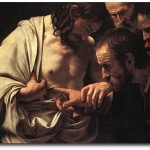The world breaks down into two types of people, those who see signs and those who see chance.
So says Mel Gibson’s character in M Night Shyamalan’s hit movie Signs. If you’ve ever seen a film written and directed by M Night Shyamalan, you’ll know exactly what he means. Shyamalan’s films often hinge on two ways of seeing.

The Sixth Sense
In the Sixth Sense, Night takes his audience through the experience of Malcolm, a child psychologist, who needs to regain his professional confidence after being shot early in the film by an enraged former patient.
Malcolm spends the rest of the film working with the shy and reluctant Cole Sear, a child showing many of the same strange symptoms that plagued his assailant. As the film progresses Cole opens up to Malcolm more and more.
Half way, Cole confesses to his counselor that he’s afraid because he see’s dead people, walking around as if they were alive all the while not knowing they are dead. Malcolm believes Cole and helps him come to grips with this gift.
The real bombshell, however, occurs in a closing scene when Malcolm, along with the audience, discovers that he himself is one of those dead people who sought his patients help. In His moment of realization the film quickly recaps half dozen scenes in which you can see how each has been wrongly perceived. Although it appears that Malcolm has spoken to others in the film, in reality no one has spoken to him since his shooting except the young boy.
Watching the movie a second time reveals how each action in the movie is ambiguous, encouraging the audience to mistakenly grasp the significance of the story until the very end.
Signs
In Signs, Shyamalan again builds into his story this two-sided perspective. The title itself participates in the film’s double meaning.
At a first glance, Signs refers to the crops circles and other mysterious appearances that provoke the small family, around which the film centers, to believe they are being visited by aliens. Yet, as the movie progresses we find that while this may be the external situation around which the plot develops, the movie is really about Grant, the father of the family, and his loss of faith in the absence of God given signs.
Like each scene in the Sixth Sense, the title is ambiguous. Although the audience doesn’t see it at first, Grant’s statement that, the world breaks down into two types of people those who signs and those who see chance” mirrors Cole’s confession to Malcolm. It is the statement upon which the film will hinge.
Just like the title, evidence for God’s presence is often itself ambiguous. In the end, Shyamalan reveals in the ordered assembly of the numerous quirks in the story, the young daughter’s inability to finish a glass of water, the son’s asthma and the brothers desire to swing a bat a benevolent God.
Although God is never seen in the film, the order in the films closing reveals that he is in fact present to those who have eyes to see.
The Village
The Village, while not as popular as the Sixth Sense or Signs, still trades on the concept of sight.
The film centers on a group of families living in small colonial community and in particular two youths a quite boy and Ivy, a girl who is out going but blind. Throughout the film, the town is dominated by the fear of a wild beast – he who must not be named – that roams the forest, keeping the villagers confined to their tiny world. But when the quiet boy is wounded, the blind girl must confront the forest and seek help from the outside.
Remarkably it is she who is blind who is shown that the beast is simply a costume, a phantom created by the elders to keep the young from leaving the village.
After groping through the forest she climbs a fence to the other side. In that moment the film cuts to Ivy’s parents back in the village. They open a box and pull out some papers and old photographs. The photographs reveal a past that is not a sepia toned pioneer world; instead it’s a colored photo of the 1960’s. The audience at once experiences a paradigm shift. In an instant, past and present slam together. The village does not exist in the past, rather it is a gated community locked away from the present.
Cutting back to Ivy on the other side of the fence, we find her confronted not by a horse and buggy but a modern SUV. In Shyamalan’s worldview the blind are the ones who are truly able to see. For unlike the audience, there blindness has allowed them not to be fooled by the external trappings of this world.
It is Shyamalan’s penchant for dazzling his audiences with things hidden in plan sight which has made his films so successful. The movies in and of themselves reveal that there are truly two types of people, those that see and those that don’t. At first the audience is completely blind, ignorant of even of their own ignorance, unable to even comprehend that they are interpreting the story wrong. When the revelation comes however it not only exposes their ignorance but gives them eyes to see.
Because his audiences have come to expect these twist ending,Shyamalan has shied away from making such films in recent years. It’s made the game of the screenwriter increasingly more difficult. But It should come as no surprise to learn that Shyamalan has named his production company Blinding Edge Pictures.






















